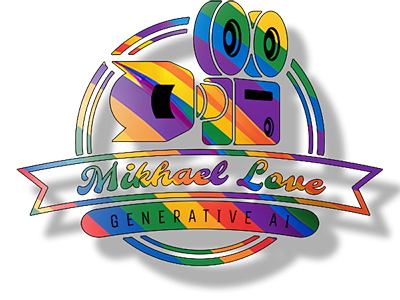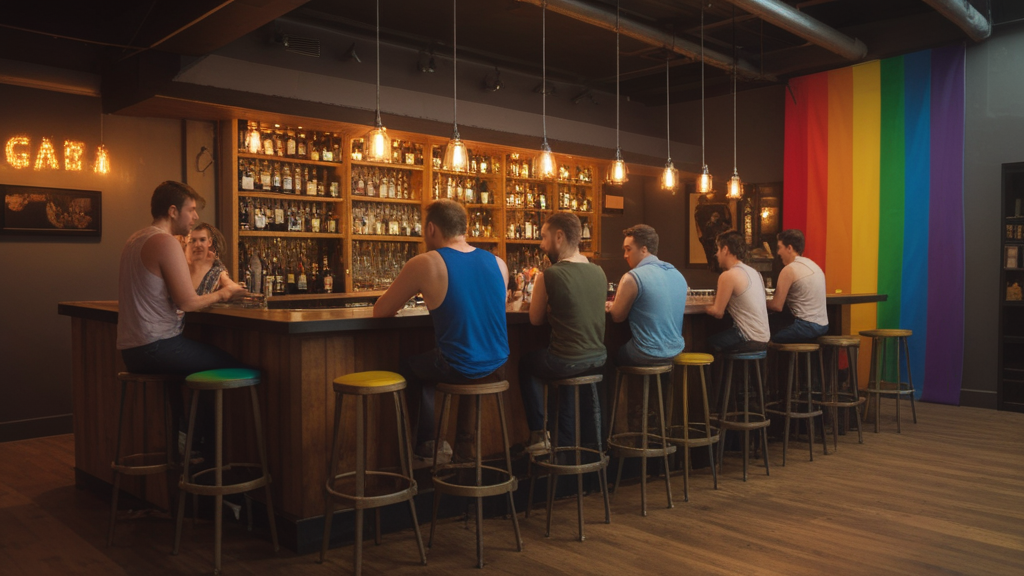Gay men’s categories have evolved to showcase our community’s diversity and complex relationship with identity and body image. A quick scroll through dating apps like Grindr reveals popular labels such as twinks, bears, otters, and daddies dominating profile descriptions.
Terms like “twink” rank among the most searched phrases on hookup sites. These gay men types have become deeply rooted in our culture. The categories go beyond physical attributes to cover mindsets and priorities. The bear community, to name just one example, has grown by a lot since the 2000s. This growth has created a thriving subculture that gave birth to related identities like cubs and wolves.
These categories represent more than just gay body types – they’ve shaped how we connect with each other. Each group, from younger, slimmer twinks to larger, hairier bears, brings its own social expectations and spaces. On top of that, transgender individuals’ increasing visibility has enriched these communities even more.
Let’s take a closer look at 12 distinct types of gay guys you’ll likely meet in 2025. We’ll explore their descriptions, traits, and natural habitats together.
Twinks
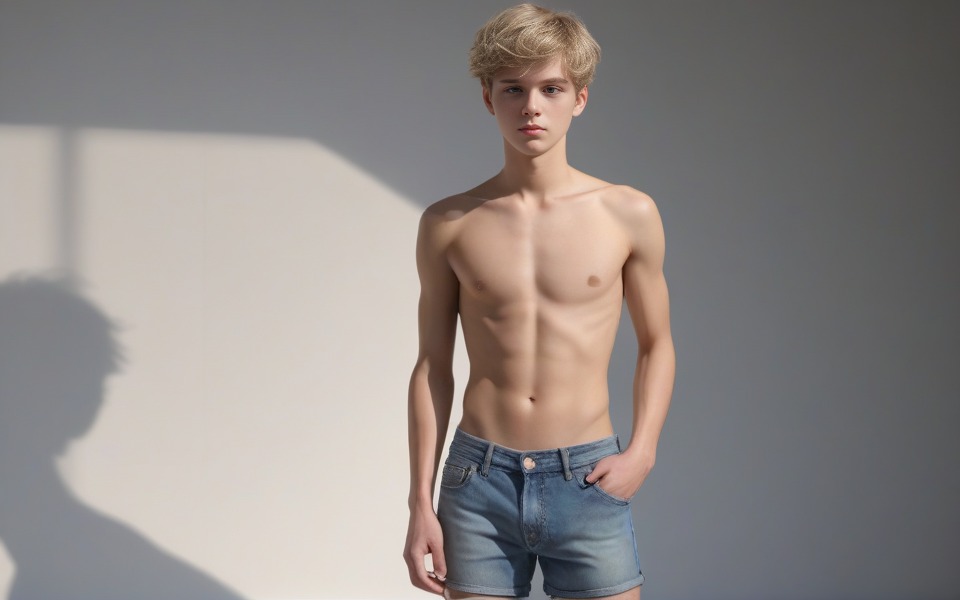
“And I worry, you know, I’m not, I’m not in touch as much with, you know, young people, you know, and people under 25, but this is what they’ve grown up on, right? The imagery. And I mean gay men in general, we’ve always had, we’ve always had sexual imagery in our culture. But I think it’s, now it’s, becomes this expectation that you have got to be hot in order to find somebody, attract somebody, and it’s, it’s leading to high levels of insecurity and self esteem issues.” — Trevor Kuhn, Dating coach specializing in LGBTQ+ relationships
Twinks are among the most recognizable types of gay men in LGBTQ+ culture. The term gained popularity during the 1990s. “Twink” describes gay or bisexual men who challenge traditional masculine roles and embrace more feminine traits.
Twinks description
The word “twink” started in gay vernacular and has become a common descriptor in the community. These young men have a youthful, fresh-faced look that sets them apart from other gay archetypes. McGinniss’s book Never Enough (2007) defines a twink as “a gay slang term used to denote an attractive, boyish-looking gay man between the ages of 18 and 23, slender ectomorph and with little or no body hair, often blond, often but not necessarily Caucasian”41.
This definition has grown broader over time. The term was once linked mainly to white men, but today’s usage includes men from many different backgrounds. The term now extends beyond gay men and includes other queer individuals who match the esthetic.
Twinks key traits
These physical characteristics define the twink archetype among different types of gay men:
- Body type: Slim build with low body fat or petite frame
- Hair: Minimal to no facial and body hair, often clean-shaven
- Age range: Typically late teens to mid-twenties (16-25)
- Appearance: Youthful features, sometimes with “cherubin complexion” and “wispy eyelashes”42
Several subcategories have emerged from the twink category. Muscle twinks (or “twunks” – combining twink and hunk) keep the youthful look but add defined muscles. Femme twinks show more gender-fluid traits and might not follow traditional masculine presentation. Euro or raver twinks often wear eclectic, artsy styles with mesh clothing43.
Where you’ll find Twinks
Dating apps like Grindr feature twinks prominently, with “twink” as an official tribe category for filtering profiles. The esthetic has become a recognized category in gay pornography.
Many online spaces cater to this demographic. Twink dating websites connect people interested in this gay body type. Social media platforms like TikTok showcase twink fashion trends, garnering millions of views44.
The label once meant youth and slenderness, but now many wear it proudly as one of the main gay men types. Communities celebrate this identity both online and in mainstream queer spaces where youthful energy thrives.
Otters
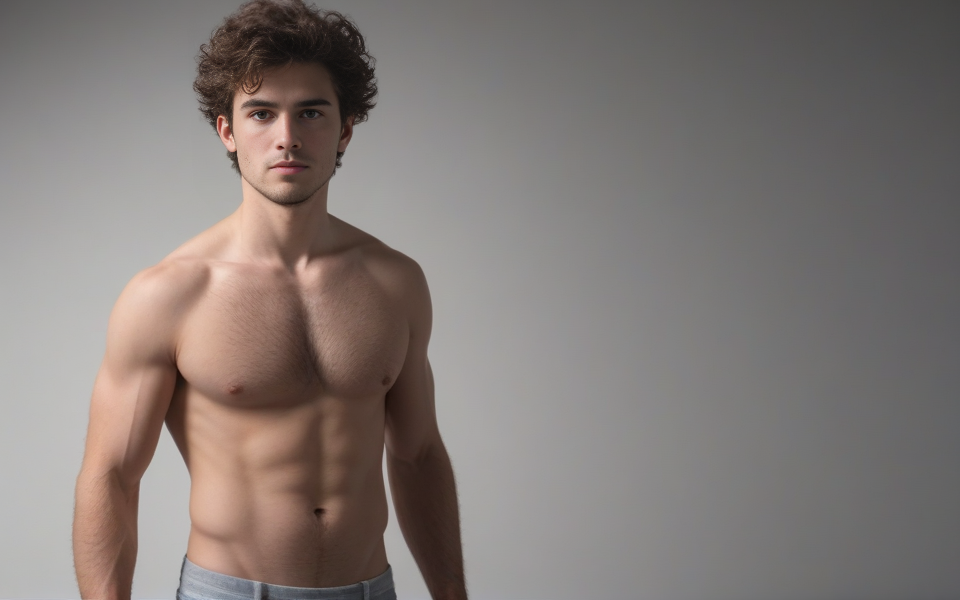
The gay male community recognizes a distinctive category that sits right between slender twinks and burly bears: otters. This classification has gained popularity and created its own unique identity in the LGBTQ+ community, bridging the gap between different gay archetypes.
Otters description
Lean, hairy gay men who stand in the middle of the gay body type spectrum make up the otter category. They blend characteristics from both worlds, unlike bears with their larger frames or twinks with their smooth appearance. The term grew from bear culture and made room for men who love their natural, hairy look but don’t have the bigger build that bears typically sport.
The name makes perfect sense – just like the sleek, furry animal, these men rock a lean, hair-covered look. Josh Olsen, who started the Otterj.com community, puts it this way: “An otter is like ‘the guy next door,’ but with an edge. They’ve become more sexually adventurous and experienced”45. These guys simply embrace who they are and feel comfortable in their skin.
Otters key traits
Here’s what makes an otter stand out:
- Build: A lean to athletic body shape – not as big as bears but usually more built than twinks
- Hair: Plenty of body and facial hair with beards – less than bears but way more than twinks
- Age: You’ll find otters of many ages – some see it as a step between twink and bear
- Attitude: These guys tend to be relaxed, easy to talk to, and adaptable in social settings
- Expression: They’re cool with both masculine and feminine traits, unlike other gay archetypes
These guys rock their natural look instead of following strict grooming rules. One otter describes himself: “I haven’t got a massively hairy chest, but I do have a really hairy *** and a nice full beard… On my body it’s all very ‘au naturel'”45.
Where you’ll find Otters
Otters feel at home in many parts of the gay community. Their unique position helps them connect different subcultures together. Bear venues and events welcome them warmly, thanks to their shared roots with bear culture46.
While bears might love high-energy parties, otters often prefer “quieter, more serene social settings”47. You’ll spot them at leather bars, general LGBTQ+ events, and sometimes at bear gatherings where they add to the mix of gay archetypes.
The online world sees plenty of otter action too. Dating apps and community sites like Otterj.com specifically cater to “otters and their admirers”45. These spaces help them build connections while celebrating their special place among gay men types.
Bears
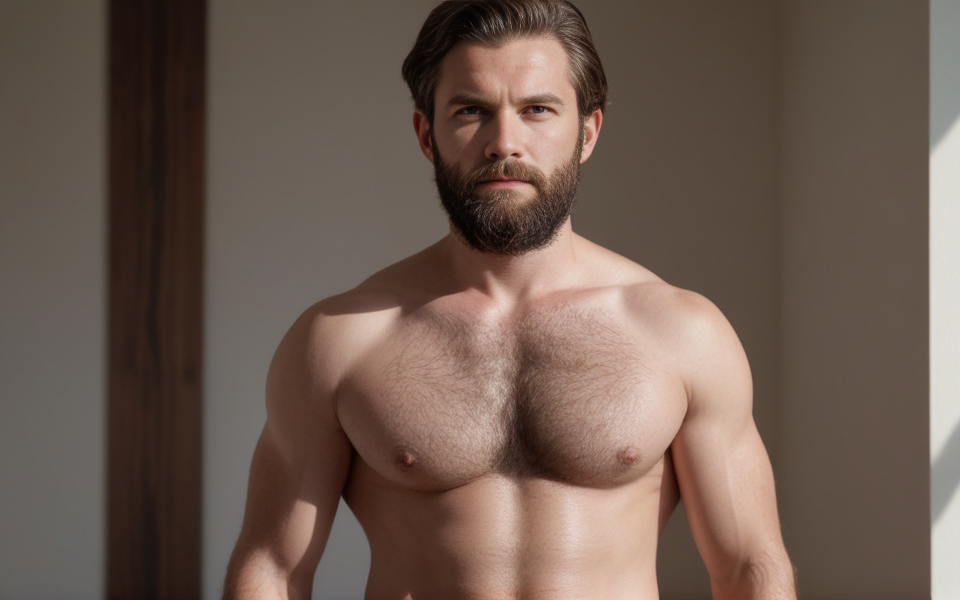
Bears represent one of the most iconic gay archetypes. This subculture emerged in 1980s San Francisco and grew into a worldwide community. They created their own unique values, language, and social structures.
Bears description
The bear identity centers around men with larger builds and more body hair. Jack Fritscher points out that bears celebrate “secondary sexual characteristics of the male: facial hair, body hair, proportional size, baldness”5. The bear culture started as a response to mainstream gay beauty standards that valued young, slim bodies.
Bear culture now reaches far beyond physical looks. The community has grown stronger with its own music, literature, and media5. A 2007 marketing survey revealed that 1.4 million men in the U.S. identify as bears6. This shows how a small group evolved into a substantial movement.
Bears key traits
Bears share these distinctive features:
- Physical appearance: Larger frames, substantial body hair, often bearded or mustached
- Masculinity expression: Traditionally masculine presentation, though views on accepting feminine expression vary within the community
- Age demographic: Usually men over 30, though this isn’t strictly defined
- Cultural values: Body positivity, self-acceptance, and typically relaxed attitudes
The bear community still debates what makes someone a bear5. Some members emphasize masculine presentation and avoid feminine traits. Others welcome all behavioral types5. This ongoing discussion shows how the community continues to shape its identity.
Where you’ll find Bears
Bears have built their own social spaces and events:
Bear clubs now exist worldwide. These groups help with social and sexual networking while supporting local gay communities through fundraising5. They organize weekend gatherings called “bear runs” in places from gay-friendly Provincetown to unexpected locations like Roanoke, Virginia6.
Bear events now happen regularly in small cities and rural areas. Most gay campgrounds include bear-focused activities during their season5. Bears celebrate globally at special events like Bearadise in Puerto Vallarta, Mad Bear Festival in Madrid, and BearScotFest in Edinburgh7.
The community thrives online through specialized dating apps like Growlr and platforms such as BearWWW, which boasts over a million members worldwide8. Bears have also created their own market with themed merchandise, entertainment, and media5.
Cubs

The bear community’s growth brought forth “cubs” as a unique category among gay men types. Cubs hold a special place in the bear world. They are younger or younger-looking men who share bear-like qualities while keeping their own distinct identity.
Cubs description
Young bears or bear-adjacent men who haven’t yet developed a mature bear’s physical stature are known as cubs. The term represents a transition phase in gay archetypes. Cubs are not just “bears without body hair“9. These men will likely grow into bears with age, which creates a natural progression in the community.
Cubs play a vital social role in bear spaces. A community member points out that cubs feel “safer around the bear/cub community” compared to mainstream gay scenes10. This sense of security comes from the accepting nature toward different body types and a less critical view of appearances.
Cubs key traits
Cubs stand out from other gay men types through several distinct features:
- Age factor: They are younger than bears, often in their teens or twenties11
- Physical build: Most have stockier or husky frames, though some are smaller than full bears5
- Hair pattern: The community debates whether cubs have less body hair than bears, but they’re generally hairy12
- Relationship dynamics: They tend to take more passive roles with bears13
The cub category has evolved to include subtypes. Muscle cubs combine cub esthetics with more defined muscles. Sugar cubs show feminine traits while keeping cub physical features14.
Where you’ll find Cubs
Cubs naturally gather in bear-centered spaces and events because of their close community ties. They build connections at bear gatherings with similar men and older bears who become mentors. To cite an instance, cubs at Manchester Pride reported feeling comfortable without pressure to “look their best”10.
Cubs maintain a strong presence on bear-specific dating apps and social platforms. Many proudly use the label in their profiles. Some add descriptors like “muscle cub” to better define their place among gay men types.
The cub identity serves as a welcoming gateway to the bear community. It gives younger men who don’t match the lean twink archetype a sense of belonging as they grow into full bears.
Jocks
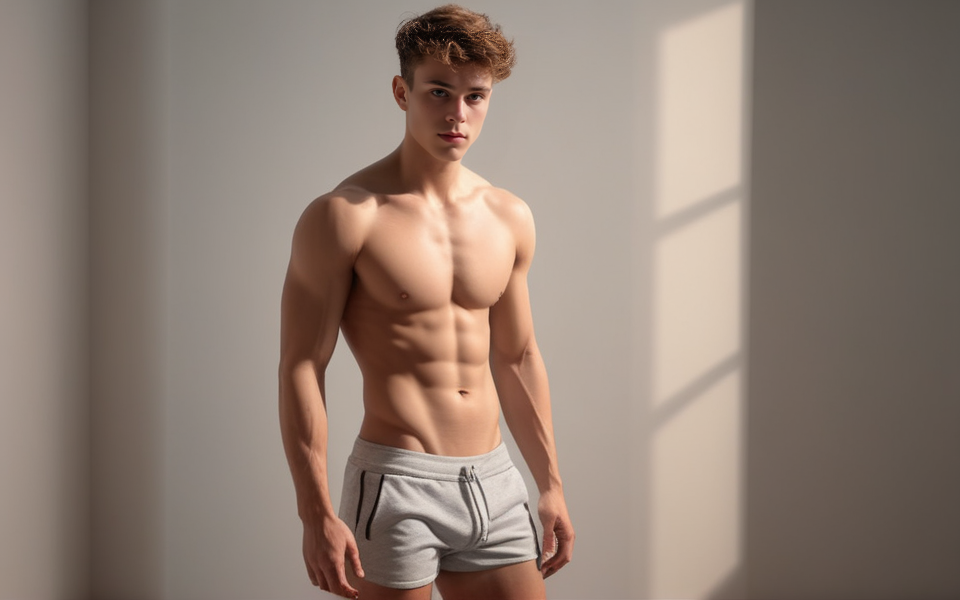
Gay men come in many types, and the jock archetype stands out by celebrating athleticism and physical fitness. This distinctive category values sports culture and muscular development. The jock label works differently in gay communities than in straight culture – it’s actually a compliment and something many aspire to be.
Jocks description
Gay culture sees jocks as men with athletic builds who live fitness-focused lives. These guys stand out from other gay men through their steadfast dedication to physical activities and sports. Most people see gay jocks as attractive, muscular males with low body fat15. This view is quite different from the straight world’s stereotype, where “jock” can suggest someone who isn’t smart or acts like a bully1.
The meaning has grown over time. Some people think of jocks simply as guys who play sports or spend lots of time at the gym. Others see it more as a way of acting or looking16. The jock identity blends physical features with a sporty lifestyle.
Jocks key traits
A few key characteristics make jocks different from other gay archetypes:
- Physique: Athletic build, muscular development, and low body fat percentage17
- Appearance: Often handsome, with bodies associated with sports15
- Age range: Can be any age, though typically younger due to athletic abilities15
- Social standing: High social capital within gay hierarchy due to conventional attractiveness18
Of course, jocks’ muscular builds help reinforce their masculine image and perceived competence. Their looks match mainstream beauty standards, which puts them in privileged positions in gay social structures. Other gay archetypes often don’t get the same positive attention17.
Where you’ll find Jocks
Jocks naturally hang out in fitness-focused places. You’ll spot them at gyms (often taking selfies), playing in gay sports leagues, and watching athletic events16. Gay leagues for softball, rugby, volleyball, and other sports are popular spots where jocks connect19.
These guys build their community through shared athletic interests rather than just hitting bars or clubs. Gay sports clubs are a great way to get to know jock-identified men in settings that focus on their interests instead of just hookups19.
Dating apps see the jock label used both for self-description and to attract similar people. Many profiles specifically mention “jock” to show their body type and what they want in potential partners16.
Muscle Queens

“But I do think it impacts the dating scene negatively when we focus so much on esthetics, as like, the number one driver in attraction.” — Adam Blum, Founder and Director, The Gay Therapy Center
Muscle Queens represent a fascinating blend of muscular physique and flamboyant personality that sets them apart in the spectrum of gay men types. They create their own unique category that differs from other gay archetypes. Their identity combines elements that might seem contradictory at first glance.
Muscle Queens description
A “Muscle Queen” describes gay men who put tremendous effort into building muscle and keeping a chiseled physical appearance. These men’s priorities often revolve around bulking and cutting cycles to achieve their ideal look20. Their muscular appearance contrasts with their effeminate and flamboyant personalities, which challenges common assumptions about muscularity and masculinity3.
The concept of Muscle Queens first gained prominence as a hypermasculine Anglo gay ideal during 1990s club culture. Cuban American gay men had to navigate this identity among three different racial perspectives on masculinity, which included locas and papis21. Queer bodybuilding has seen new life in the 2020s, though the sport has never lost its LGBTQ+ connections22.
Muscle Queens key traits
These physical and personality traits define Muscle Queens:
- Appearance focus: “Pumps iron every waking moment” to catch other men’s attention3
- Body esthetic: Very developed musculature, often described as “grotesquely muscular”3
- Personality contrast: Pairs muscular physique with effeminate behaviors
- Dating priorities: Their attention is drawn to other muscular gay men almost exclusively3
Some gay men turned to bodybuilding as a way to blend into society. A well-developed physique with abs and massive forearms could draw attention away from other traits that might raise suspicion, since people often linked femininity to homosexuality22.
Where you’ll find Muscle Queens
Gyms naturally serve as the main hangout spots for Muscle Queens who spend considerable time developing their physiques. These fitness enthusiasts also gather at specific gay venues like Hombres Lounge in Jackson Heights, which stays “constantly packed” with “down-to-earth guys who love wearing tight wife-beaters and showing off their muscled” bodies23.
Muscle Queens built their communities through muscle magazines that doubled as coded gay pornography in the past. This clever approach let them appreciate the male form without legal consequences22. Today, they showcase their physiques and connect with admirers through social media platforms and dating apps.
Daddies
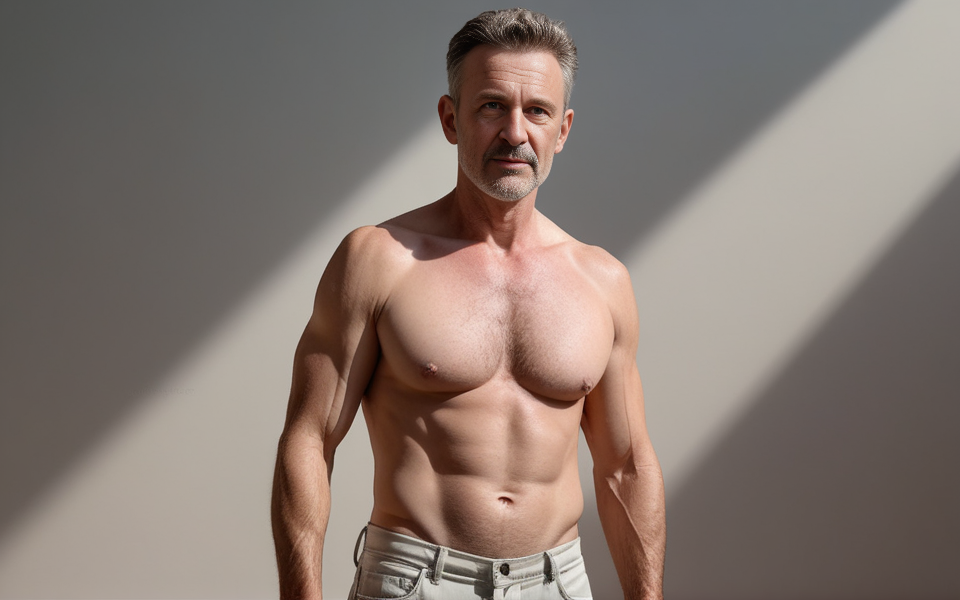
Gay culture has entered what people call its “Daddy Era.” This archetype has gained growing popularity and cultural significance among gay men of different types. The daddy identity goes beyond just body type. It represents experience, confidence, and nurturing abilities that make this archetype special.
Daddies description
The term “daddy” in gay culture means more than just age. It embodies a relationship dynamic that values experience and mentorship. These men are known for their natural ability to guide, support, and nurture younger men through life’s complexities. A New York Times piece notes that “daddy culture has become so widespread in popular entertainment, both gay and straight, that its darker implications have become largely overshadowed by its playful ones”24.
Daddies come from different walks of life. Their ages usually start in the early 40s, though exceptions exist. These men feel comfortable mentoring others through life’s challenges – from career advancement to family relationships. This nurturing connection creates the foundation of the daddy archetype. The bonds they form are “not just physical, but emotional too”2.
Daddies key traits
Daddy characteristics go beyond physical attributes:
- Confidence and stability: They project assurance and life experience
- Mentorship abilities: They guide others through career, relationships, and personal growth
- Emotional maturity: They recognize and communicate feelings effectively
- Financial security: They often have established careers
- Physical traits: They often have graying hair, beard, or “dad bod”
Research shows many daddies didn’t choose this identity—it chose them. “I didn’t expect to be a daddy, it just kind of happened,” said one 57-year-old man. “It was gradual. They started calling me daddy in my early 40s”2.
Where you’ll find Daddies
Daddies can be found on many platforms and spaces. Dedicated dating apps like Daddyhunt—”the largest online gay community specifically for older men and their admirers”25—create specialized spaces. Traditional gay bars attract daddies who want to connect with younger men.
Online communities thrive around this archetype. The Daddyhunt community has “over 15 years of experience fostering an online community of respect and admiration”26. They cater to men who value “authentic, natural” connections over superficial interactions.
Leather Daddies
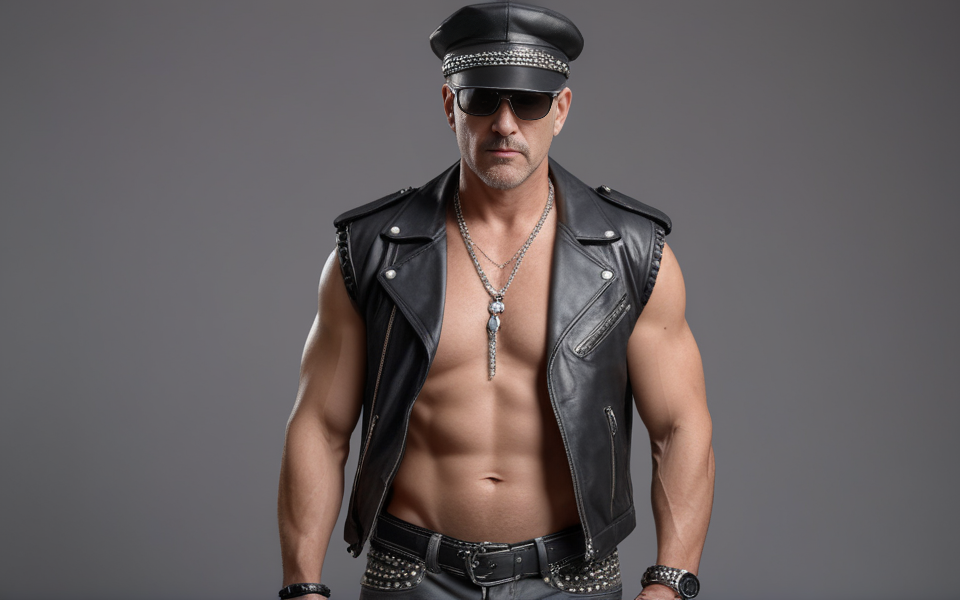
Gay men come in many types, and Leather Daddies rank among the most important archetypes in LGBTQ+ history. They represent more than just a visual style – their subculture has deep historical roots. These men embody authority, experience, and community leadership through their distinctive leather attire and culture.
Leather Daddies description
The leather community started in the 1940s from post-World War II motorcycle clubs27. Many queer servicemen returning from war became its early members [link_1]. Los Angeles saw the first leather look, which later spread to New York City, Chicago, and San Francisco27. Leather Daddies have managed to keep their respected position and authority in the broader gay community through the years.
The 1970s became what many call the “Golden Age” of leather culture. The community grew tremendously and became more organized worldwide27. A Leather Daddy stands as “a figure of authority, experience, and guidance” in this specialized community28. The leather daddy archetype from this era, with its sadomasochistic elements, helped create the broader daddy archetype in queer culture27.
Leather Daddies key traits
Leather Daddies stand out from other gay archetypes through several distinctive characteristics:
- Appearance: Their leather garments and accessories symbolize their affiliation and identity28
- Age and experience: These seasoned members earn respect through their involvement and knowledge28
- Community role: They guide less experienced members through leather culture protocols as mentors28
- Leadership qualities: They organize events, support causes, and encourage community unity28
Where you’ll find Leather Daddies
Leather Daddies remain visible throughout the gay community’s spaces. Leather bars became their first gathering spots, with Chicago opening the first one in 1958 [link_2]29. These men also host social gatherings and workshops. Newcomers can explore leather culture in these educational environments beyond just socializing30.
The Folsom Festival provides excellent opportunities to meet Leather Daddies in their element each year31. Dedicated online platforms like Daddyhunt connect “Leather Daddies and their admirers.” These sites have tens of thousands of members looking for friendships and dating opportunities31. Leather Daddies serve as cultural guardians and elder statesmen wherever the leather community comes together.
Geeks (Gaymers)

Gay identities come in many forms, but “Gaymers” stand out as a unique group. Their identity stems from shared interests and cultural connections rather than physical traits or age. These individuals bond over gaming, technology, and geek culture.
Geeks description
“Gaymer” has become a popular term that brings together LGBTQ+ people who love video games, tabletop gaming, and geek culture32. The community first took shape in 1988 with the first Gaylaxicon convention33. The movement has grown significantly since then. A single Facebook group started with just a few local members and expanded to over 50,000 worldwide participants. The group now has strong communities in the U.S., U.K., Canada, Australia, and Brazil34.
The gaymer identity creates connections that traditional gay spaces sometimes miss. A community founder put it perfectly: “For me, it was about wondering ‘Are there other gays like me?’ Gay people that are really into video games, comic books, things like Star Trek?”34. These communities have become a vital support system. Members have shared that gaymer groups “prevented them from committing suicide” and helped them “feel less isolated”34.
Geeks key traits
Typical gaymer characteristics include:
- Varied interests: They include comic book enthusiasts, Pokémon lovers, and gamers of all types – from tabletop to PC and console platforms34
- Gaming priorities: Many prefer role-playing games and exploration-focused content32
- Community orientation: They value safe spaces where their gaming passion and sexuality can coexist
- Demographics: The community consists mainly of gay men, with active lesbian members too, ranging from teens to seniors34
Where you’ll find Geeks
Gaymers gather both online and offline. London’s Gaymers iNC hosts monthly gaming events that draw thousands of LGBTQ+ gamers who come to “play video games, make lasting friendships, and geek-out”35. Special conventions like GaymerX (formerly GaymerCon) feature “parties, panels, community and cosplay”36.
The online world buzzes with gaymer activity through Reddit’s r/gaymers, Discord servers, and dedicated groups like London Gaymers and Aussie Gaymer Network32. These platforms create safe spaces for friendship and shared gaming experiences, away from the homophobia that often exists in mainstream gaming communities.
Clean-Cut

Clean-cut gay men stand out with their distinct esthetic in the spectrum of gay identities. Their polished, conventional appearance creates a stark contrast with more subcultural looks you’ll find throughout the LGBTQ+ community.
Clean-Cut description
The clean-cut identity revolves around a well-groomed, mainstream appearance that traditionally connects with conventional masculinity and professional settings. This archetype differs from other gay men types because it lines up with mainstream fashion norms rather than specific subculture esthetics. Clean-cut individuals show an image of respectability that others often see as “the boy next door” or the professional office worker.
The term “clean-cut” works almost exclusively as a male descriptor in general culture. Even within the rich framework of gay archetypes, people rarely apply this term to women or non-binary individuals. This suggests its deep connection to traditional masculine presentation norms.
Clean-Cut key traits
Clean-cut gay men typically show these defining characteristics:
- Grooming: Short, neat haircuts that are frequently styled; always clean-shaven or with meticulously maintained facial hair
- Appearance: No visible tattoos or piercings; conventional clothing choices like well-fitted collared shirts or polos
- Personal care: Regular use of cologne and deodorant; overall attention to hygiene and presentation
- Style: Preppy or business casual wardrobe featuring “nice” clothes rather than t-shirts and ***** or sweatpants
This esthetic often pairs with personality traits like politeness and conventional social behavior. People note that clean-cut men might not always be “as sincere as they appear to be.”
Where you’ll find Clean-Cut types
Clean-cut gay men naturally fit into mainstream professional and social environments. They excel in corporate settings, upscale restaurants, and conventional social gatherings where their appearance matches widespread expectations.
Dating apps use the “clean-cut” label as both self-identification and filtering mechanism. Many profiles highlight this trait to signal their esthetic and attract partners who share similar presentation styles or appreciate this look.
Clean-cut gay men remain visible in spaces where conventional presentation holds value. They move comfortably within mainstream social structures while staying active in gay culture.
Rugged

The rugged gay archetype celebrates raw masculinity that embodies an outdoorsy, unpolished esthetic within the spectrum of gay men types. This unique category captures the essence of a “lumberjack fantasy” – a natural masculinity combined with an unrefined presentation.
Rugged description
Rugged gay men showcase a specific esthetic that emphasizes traditional masculinity through an unpolished, natural appearance. It’s worth mentioning that ruggedness focuses on a particular style rather than age or body size. These men project what many describe as a “lumberjack type fantasy” – strong, bearded individuals who exude traditionally masculine energy.
In spite of that, rugged types aren’t just a subset of bears, even though they share some characteristics. We focused on presentation and attitude rather than body size alone when defining the rugged identity. Many sources describe rugged men as having “a very strong, masculine appearance” that shows traditional masculinity through their look and behavior.
Rugged key traits
Physical and personality characteristics defining rugged gay men include:
- Appearance: Beards and facial hair are almost universal, paired with a natural, unmanicured style
- Build: Strong and muscular but not necessarily gym-sculpted
- Style: Practical, functional clothing (flannel, denim, work boots) instead of fashionable attire
- Demeanor: Shows traditional masculine behaviors and interests
- Interests: Outdoor activities, manual skills, and practical hobbies
Where you’ll find Rugged types
Rugged gay men gather in spaces that match their esthetic and interests. Their appearance reflects their genuine enjoyment of outdoor activities and less urban environments. They maintain a strong presence in bear-adjacent spaces while keeping their distinct identity.
Dating apps use “rugged” as both self-identifier and search term, appearing with “masculine” and “outdoorsy” in profiles. Bear and leather events attract rugged men too, especially ones that focus on traditional masculinity rather than specific body types.
Poz

“Poz” stands out as a unique identity among gay men types. It represents people living with HIV who openly accept their status as part of who they are. This identity is different from other gay archetypes because it centers on lived experience rather than looks or interests.
Poz description
The term “Poz” came about when HIV-positive gay men wanted to take back control of their identity beyond just a medical diagnosis. Writer Scott O’Hara was one of the prominent figures who started conversations about positive identity. In 1995, he made his stance clear: “I’m tired of using condoms, and I won’t… and I don’t feel the need to encourage negatives to stay negative”37. The community developed its own point of view over time. They saw semen exchange as having “rich symbolic meanings” tied to intimacy and connection37.
Today’s Poz prevention frameworks see “HIV-positive people as people, rather than simply as potential sources of new HIV infections”4. This fundamental change recognizes their right to make their own choices about all aspects of sexual health. These choices include decisions about disclosure and access to services4.
Poz key traits
Poz men usually show these characteristics:
- Community connection: Strong bonds with others who share similar experiences
- Openness: Different ways to share their status, from private to completely open
- Identity integration: They see their HIV status as just one part of who they are
- Support-seeking: They value spaces that meet their unique needs while accepting the community’s diversity4
Where you’ll find Poz men
Poz men have built their own spaces to connect with others. Dating platforms like POZ Personals give them “a unique environment in which to seek friends and dates”38. These platforms put safety and privacy first, so members can connect without worrying about judgment39.
Beyond online spaces, monthly POZ Men’s Groups bring together “HIV positive gay & bisexual men for a monthly interactive dialog”40. These meetings help “members identify & solve problems in the areas of total well-being” and work to “silence the stigma associated with being HIV positive”40.
Comparison Table
| Type | Key Physical Traits | Typical Age Range | Defining Characteristics | Common Spaces |
|---|---|---|---|---|
| Bears | Larger frames, lots of body hair, bearded/mustached | 30+ | Body positivity, self-acceptance, relaxed attitudes | Bear clubs, bear runs, dedicated apps (Growlr, BearWWW) |
| Clean-Cut | Short neat haircuts, well-kept facial hair, no visible tattoos/piercings | Not mentioned | Polished look, conventional behavior, professional style | Corporate settings, upscale restaurants, mainstream social gatherings |
| Cubs | Stockier/husky build, hairy but less than bears | Teens-20s | Often take quieter roles, moving toward bear identity | Bear gatherings, bear-specific dating apps |
| Daddies | Usually graying hair, beard, “dad bod” | 40+ | Confident, good mentors, emotionally mature, financially stable | Dating apps (Daddyhunt), traditional gay bars |
| Geeks (Gaymers) | No specific physical traits mentioned | Teens to seniors | Love gaming, geek culture fans, need safe spaces | Gaming conventions, online communities, Discord servers |
| Jocks | Athletic build, muscular, low body fat | Not mentioned | Sports/fitness lovers, popular in community | Gyms, gay sports leagues, athletic events |
| Leather Daddies | Wear leather garments/accessories | Older | Leaders, guides, mentor others | Leather bars, Folsom Festival, community workshops |
| Muscle Queens | Very developed muscles | Not mentioned | Mix muscular physique with feminine traits, appearance-focused | Gyms, social media platforms |
| Otters | Lean to athletic physique, lots of body/facial hair | Wide range | Relaxed, friendly, adapt well socially | Bear venues, leather bars, general LGBTQ+ gatherings |
| Poz | No specific physical traits mentioned | Not mentioned | Strong community ties, different ways to share status | POZ Personals, POZ Men’s Groups, online communities |
| Rugged | Bearded, natural style, strong build | Not mentioned | Traditional masculine traits, outdoor interests | Outdoor spaces, bear-adjacent venues |
| Twinks | Slim build, little/no body hair, young features | 16-25 | Often show feminine traits, youthful spirit | Dating apps (especially Grindr), social media platforms |
Conclusion
These 12 types of gay men help you understand the LGBTQ+ community’s landscape in 2025. They work as helpful reference points rather than rigid boxes, which lets people find where they belong while celebrating what makes them special. These labels might look restrictive at first, but they actually enable gay men to connect with others who share their traits, interests, and experiences.
The categories have changed substantially over time and will keep evolving as our community grows. Bears came about in the 1980s to challenge mainstream beauty standards, while Poz identity developed when HIV-positive men took control of their own stories. Gay archetypes show our community’s ongoing discussion about identity, belonging, and self-expression.
Gay men often fit into several categories at once or move between them as time passes. A young cub can grow into a bear, and a clean-cut professional might show his rugged side on weekends. This fluid identity shows gay culture’s depth and complexity beyond basic stereotypes.
The rich diversity among these different types shows that the gay community runs on its varied expressions of masculinity, interests, and style. Each archetype adds value to our shared identity – from twinks to bears, leather daddies to gaymers. They create spaces where people can be themselves completely.
These categories create connections instead of setting limits. They help us see ourselves in others while celebrating each person’s unique place in gay culture’s colorful mix.
References
[1] – https://en.wikipedia.org/wiki/Jock_(stereotype)
[2] – https://qburgh.com/what-does-it-mean-to-be-a-daddy/
[3] – https://www.urbandictionary.com/define.php?term=muscle%20queen
[4] – https://www.pwatoronto.org/english/pdfs/poz-prevention-service-provider-manual.pdf
[5] – https://en.wikipedia.org/wiki/Bear_(gay_culture)
[6] – https://glreview.org/article/bear-culture-101-no-prerequisite/
[7] – https://www.grindr.com/blog/bear-gay
[8] – https://www.bearwww.com/
[9] – https://theorion.com/41203/opinion/guide-to-gay-mens-body-types/
[10] – https://thequeerness.com/2015/10/26/bears-otters-and-cubs-oh-my/
[11] – https://lexicon.library.lgbt/definitions/cub/
[12] – https://www.burnettfoundation.org.nz/articles/culture/cub-chub-or-bear-all-about-big-boys/
[13] – https://www.caffmoscommunity.com/gay-cubs
[14] – https://qburgh.com/lets-talk-dirty-to-the-animals/
[15] – https://discover.hubpages.com/relationships/Gay-Men-Are-you-a-Jock-Otter-Bear-or-Wolf
[16] – https://www.queerty.com/defines-jock-gay-guys-sound-off-20170610/
[17] – https://www.cambridge.org/core/journals/industrial-and-organizational-psychology/article/twinks-jocks-and-bearsoh-my-the-stereotype-content-model-extended-to-gay-men-and-weight-at-work/82C91200AB685EEDFD2127E9ECA18DE7
[18] – https://slate.com/human-interest/2019/04/gay-geek-jock-culture-assimilation-scene.html
[19] – https://www.quora.com/Where-can-I-meet-nice-gay-men-apart-from-bars-and-dating-sites
[20] – https://www.heygay.com/post/from-bear-to-twink-deconstructing-gay-men-s-body-types-and-stereotypes
[21] – https://minnesota.universitypressscholarship.com/view/10.5749/minnesota/9780816665532.001.0001/upso-9780816665532-chapter-7
[22] – https://gcn.ie/queer-history-bodybuilding/
[23] – https://newyork.gaycities.com/bars/nid/2909
[24] – https://www.nytimes.com/2024/10/07/t-magazine/daddies.html
[25] – https://apps.apple.com/us/app/daddyhunt-fun-gay-dating/id921687947
[26] – https://daddyhunt.com/
[27] – https://en.wikipedia.org/wiki/Leather_subculture
[28] – https://es.vaccines.gov/leather-daddy-gay
[29] – https://inmagazine.ca/2020/03/a-brief-history-of-leather-and-the-gays/
[30] – https://www.grindr.com/blog/leather-community
[31] – https://daddyhunt.com/gay-daddies/leather-daddies/
[32] – https://en.wikipedia.org/wiki/Gaymer
[33] – https://manifold.counseling.org/read/gay-subculture-identification-training-counselors-to-work-with-gay-men
[34] – https://www.nbcnews.com/feature/nbc-out/gay-geeks-online-utopia-lgbtq-gamers-comic-fans-trekkies-n809411
[35] – https://gaymersinc.com/
[36] – https://thehissfit.com/2013/07/gay-geek-gaymers-connect-for-gaymerx/
[37] – https://www.poz.com/article/A-Ride-on-the-Wild-Side-1460-8374
[38] – https://www.poz.com/blogger/poz-personals
[39] – https://www.positivesingles.com/hiv-dating-for-gay-and-bisexual-men
[40] – https://www.thewalllasmemorias.org/poz_mens_group_3
[41] – https://lgbtqia.fandom.com/wiki/Twink
[42] – https://www.them.us/story/what-is-a-twink
[43] – https://www.grindr.com/blog/what-is-a-twink
[44] – https://feeld.co/ask-feeld/how-to/what-are-twinks
[45] – https://www.thepinknews.com/2018/05/30/what-is-an-otter-gay-tribe-meaning/
[46] – https://lgbtqia.wiki/wiki/Otter
[47] – https://www.bearwww.com/blog/exploring-gay-otter-culture-lgbtq-community/
